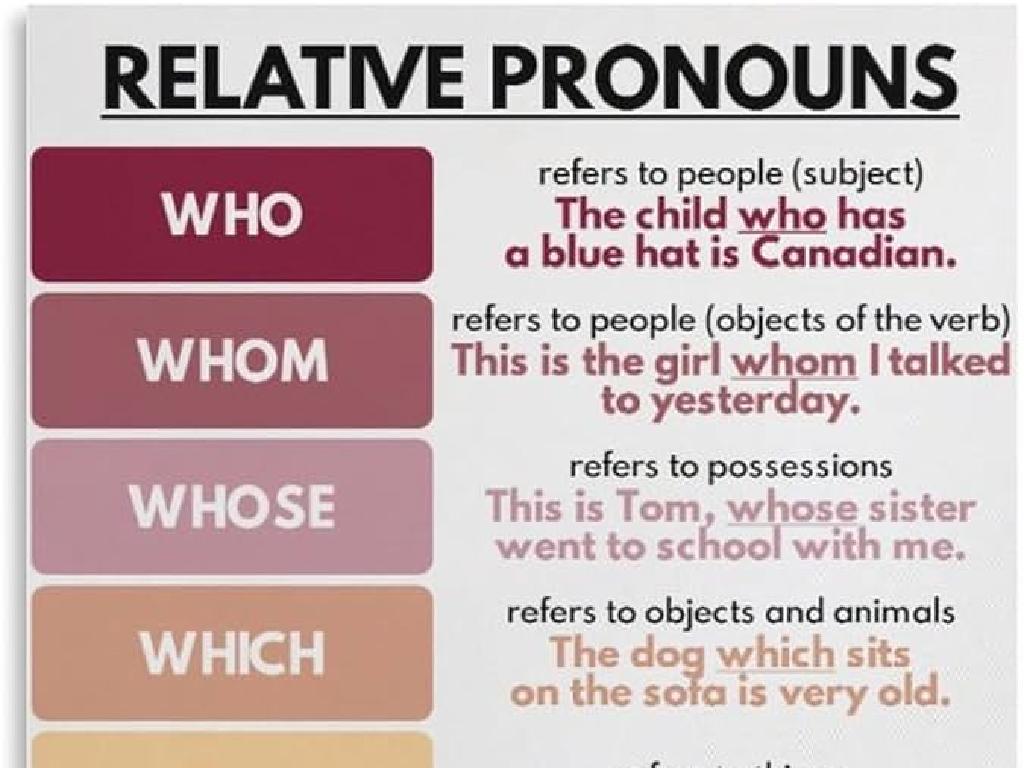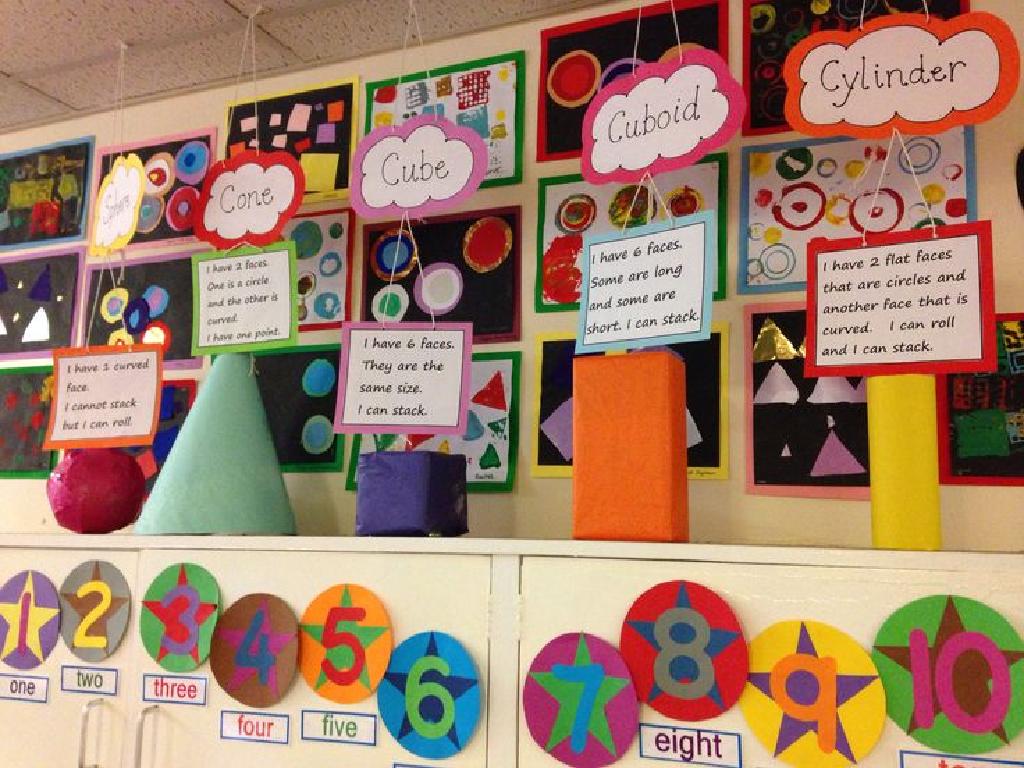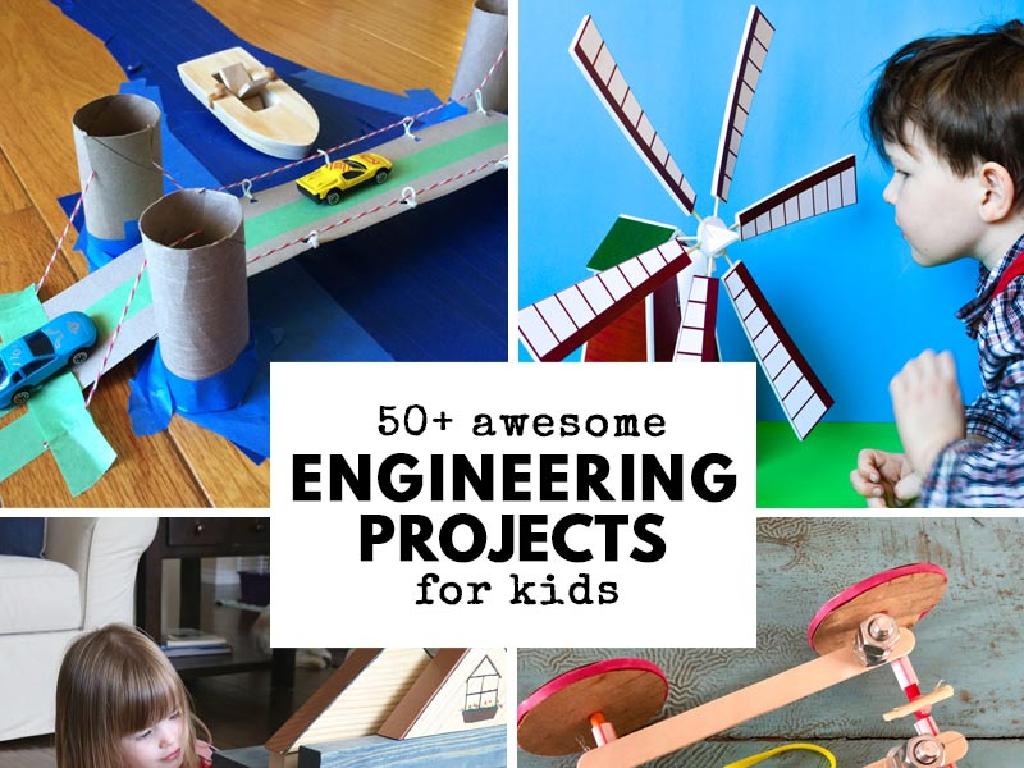Complete The Addition Sentence - Sums Up To 20
Subject: Math
Grade: First grade
Topic: Complete The Equation
Summary: This first grade math presentation guides students through completing addition sentences with sums up to 20 using hands-on activities, objects, and number lines. Learners practice finding missing numbers in equations like 5 + __ = 20, boosting their confidence with counting, manipulatives, and team games. The engaging, interactive approach makes addition fun while building essential skills, preparing students to master more advanced math concepts with a strong foundation in basic addition.
Please LOG IN to download the presentation. Access is available to registered users only.
View More Content
Welcome to Addition!
– Becoming addition experts
– Completing addition sentences
– Find the missing number: 5 + __ = 20
– Adding numbers up to 20
– Learn to add smaller numbers to reach 20
– Practice with fun activities
– Use blocks, drawings, or fingers to add
|
This slide introduces first graders to the concept of addition and sets the stage for learning how to complete addition sentences with sums up to 20. Start by explaining what an addition sentence is and show visual examples with numbers less than 20. Encourage the students to participate by thinking of numbers that add up to 20. Use manipulatives like blocks or drawings to help them visualize the addition process. Prepare a set of fun activities such as addition games or interactive worksheets where students can practice completing addition sentences. The goal is to make them comfortable with the idea of adding numbers together and understanding that there are multiple combinations that can sum up to 20.
Completing Addition Sentences
– What’s an addition sentence?
– It’s a math problem that adds numbers together.
– Example: 3 + ___ = 5
– We need to find what number goes in the blank.
– Find the missing number
– The number that makes the equation true, like 3 + 2 = 5.
– Practice makes perfect!
|
This slide introduces the concept of an addition sentence, which is a fundamental building block in learning arithmetic. Start by explaining that an addition sentence is a way to show how two numbers combine to make a larger number. Use simple examples with small numbers to illustrate the concept. Encourage students to think of the addition sentence as a puzzle where they need to find the missing piece. Provide several examples and use hands-on materials like counters or blocks if possible to help them visualize the process. The goal is for students to understand that they can find the missing number by thinking about what amount needs to be added to the first number to reach the total sum.
Adding with Objects: Sums Up to 20
– Use objects to learn addition
– Example: Adding apples together
– If you have 4 apples and get 2 more, how many now?
– Counting together to find totals
– Let’s count: 1, 2, 3, 4, and then 5, 6. So, 4 + 2 = 6!
– Practice makes perfect in addition
|
This slide is aimed at helping first graders understand addition by using tangible objects like blocks or fingers. Start by explaining that objects can represent numbers and can be used to visualize addition problems. Use the example of adding apples to make it relatable. Encourage the students to count aloud together to reinforce the concept of combining quantities to find a total. Provide various objects for the students to practice adding up to 20, ensuring they grasp the concept of addition as a means of finding the sum of two numbers. Remember to praise their efforts to build confidence.
Let’s Practice Addition Together!
– I’ll show an addition sentence with a missing number
– We’ll use objects to find the missing number
– Like using blocks or beads to count up to 20
– Counting skills help us solve the problem
– Remember, counting on fingers can help too!
– Everyone gets a turn to try!
|
This slide is designed to engage first-grade students in a hands-on addition activity. The goal is to help them complete addition sentences that sum up to 20. Start by presenting an addition sentence with one number missing, such as ‘___ + 15 = 20’. Use classroom objects like blocks or beads to visually demonstrate the concept of ‘adding up’ to reach a total of 20. Encourage students to use their counting skills, whether it’s with objects or fingers, to find the missing number. Make sure to involve each student by giving them a chance to solve different problems. This interactive approach reinforces their understanding of addition and the concept of ‘making 20’. The activity should be fun, encouraging, and supportive, allowing students to build confidence in their math skills.
Finding the Missing Piece: Addition up to 20
– Use a number line to find sums
– A number line shows numbers in order, which helps us add.
– Start at the first number
– If we have 8, we start at 8 on the number line.
– Count steps to reach the sum
– How many steps to 20? Count them on the line.
– Let’s practice with a number line!
– We’ll add together using the number line as a guide.
|
This slide introduces the concept of using a number line to complete addition sentences with sums up to 20. It’s a visual and interactive way for first graders to understand addition. Start by explaining what a number line is and how it can be used as a tool for adding numbers. Demonstrate with an example, such as starting at number 8 on the number line and taking the necessary steps to reach 20. Encourage the students to ‘walk’ on the number line in their minds or with their fingers. The activity will involve practicing with different starting numbers and finding the number of steps needed to reach the sum of 20. This hands-on approach helps solidify the concept of addition and number sequencing.
Your Turn to Solve: Addition up to 20
– Complete the addition sentences
– Use fingers or objects for help
– Count with items like blocks or beads
– Practice using a number line
– Draw a line with numbers and hop along
– Aim for sums up to 20
|
This slide is an interactive activity for students to practice completing addition sentences with sums up to 20. Encourage them to use their fingers or classroom objects like blocks or beads to count. Introduce the number line as a visual aid to help them understand the concept of addition. Emphasize that practice is key to becoming confident in solving addition problems. Provide a variety of addition sentences for them to complete, and ensure to offer praise as they progress. For those who finish early, challenge them with creating their own addition sentences for peers to solve.
Class Activity: Addition Relay
– Join a team for the relay
– Solve addition sentences together
– Work with your team to add numbers up to 20
– Each correct answer advances your team
– The faster you solve, the quicker your team moves in the game
– Have fun and practice addition!
|
This activity is designed to make learning addition fun through a team relay game. Divide the class into small groups and have them line up at a starting point. Give each team an addition problem that sums up to 20. When a team solves their problem correctly, they can move forward. The game continues with new problems until one team reaches the finish line. This encourages teamwork, quick thinking, and reinforces their addition skills. Possible variations include using props, incorporating physical activities between rounds, or having different difficulty levels for each leg of the relay.
Becoming an Addition Star!
– Congratulations on learning addition!
– Practice makes perfect
– The more you practice, the better you’ll get
– It’s okay to ask for help
– Your teacher and parents are here to help you
– Keep adding up to 20!
|
This slide is meant to congratulate the students on their hard work learning how to complete addition sentences that sum up to 20. It’s important to encourage them to continue practicing in order to improve their skills. Remind them that asking for help is a part of learning and that they should never hesitate to ask their teacher, parents, or classmates if they are unsure about something. Reinforce the concept by giving them a few additional examples to try at home, and perhaps suggest some fun math games that involve addition to make practice enjoyable.




-makes-the-number-sentence-true---up-to-100/addition_subtraction_examples.jpg)
